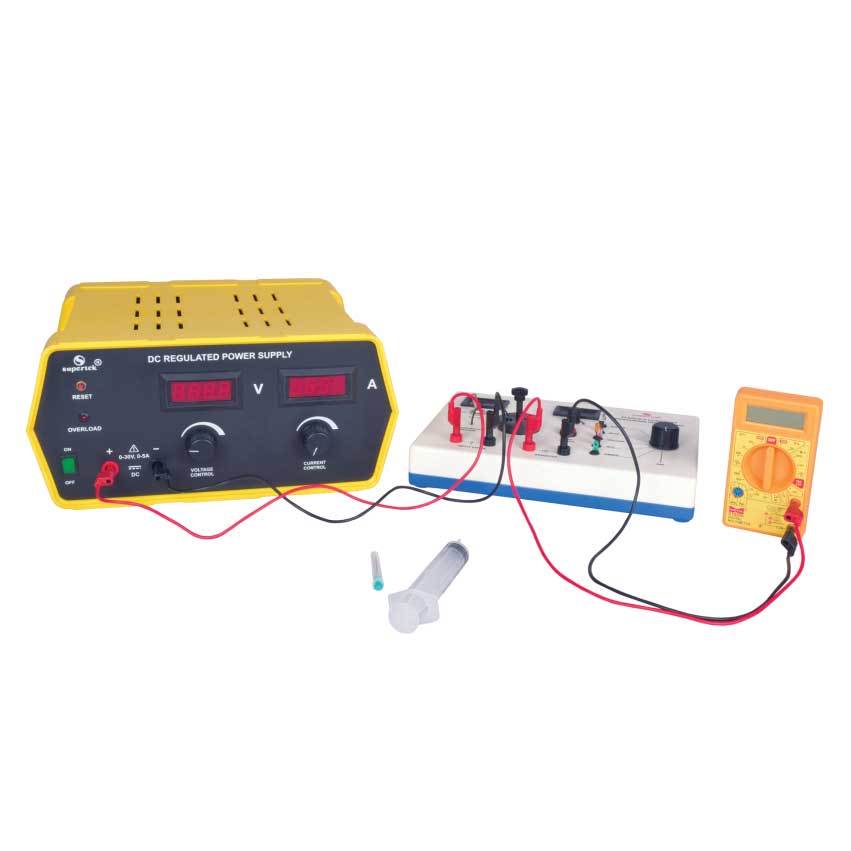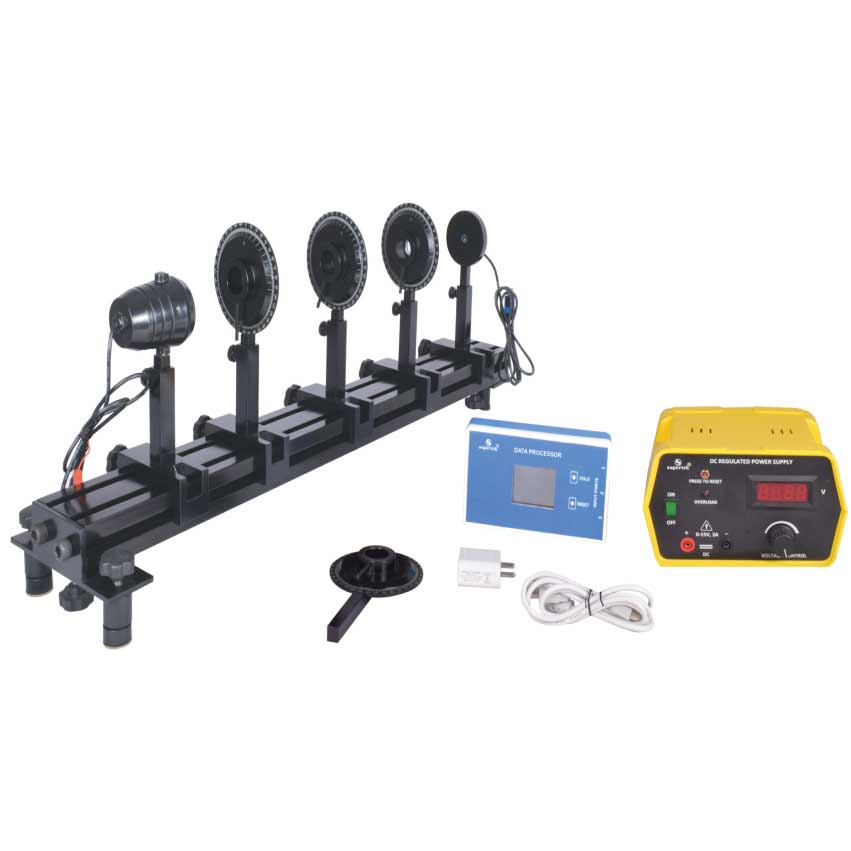Single Slit Experiment
Objectives:
• To find wavelength of given laser using the slit of known width.
• To find the slit width knowing the wavelength of light used.
• Proving the concept of Heisenberg uncertainty principle.
Principle:
Diffraction is a phenomenon of bending of waves when it encounters obstacles or narrow opening. A basic set up to observe diffraction consists a
laser, a slit, screen placed at a distance. The wave fronts are partially obstructed by the slit. The intensity distribution of the diffraction pattern consists of a series of light and dark fringes with the intensity distribution is symmetric along about the central axis. The primary peak is called the central maxima. The corresponding peaks are called secondary, tertiary maxima. This is studied using the single slit experiment.
Key Features:
• Precise Optical Alignment: The optical alignment of the components is attained by optical bench, the setting up time is faster and experimentation is easy.
• Digital Lux Meter with Transverse Saddle: The digital Lux meter enables measurement of light intensity. The transverse saddle helps in fine movement of Lux meter perpendicular to the direction of light.
What you Need
| OB1 | Optical Bench Set 0.8m | 1 |
| HA003 | Laser Source Holder | 1 |
| HA012 | Adjustable Collimating Slit Holder | 1 |
| HA512 | Travelling Light Sensor Holder | 1 |
| DP1 | Data Processor | 1 |
| PH61022D/2 | Power Supply for Light Source | 1 |
In Stock






